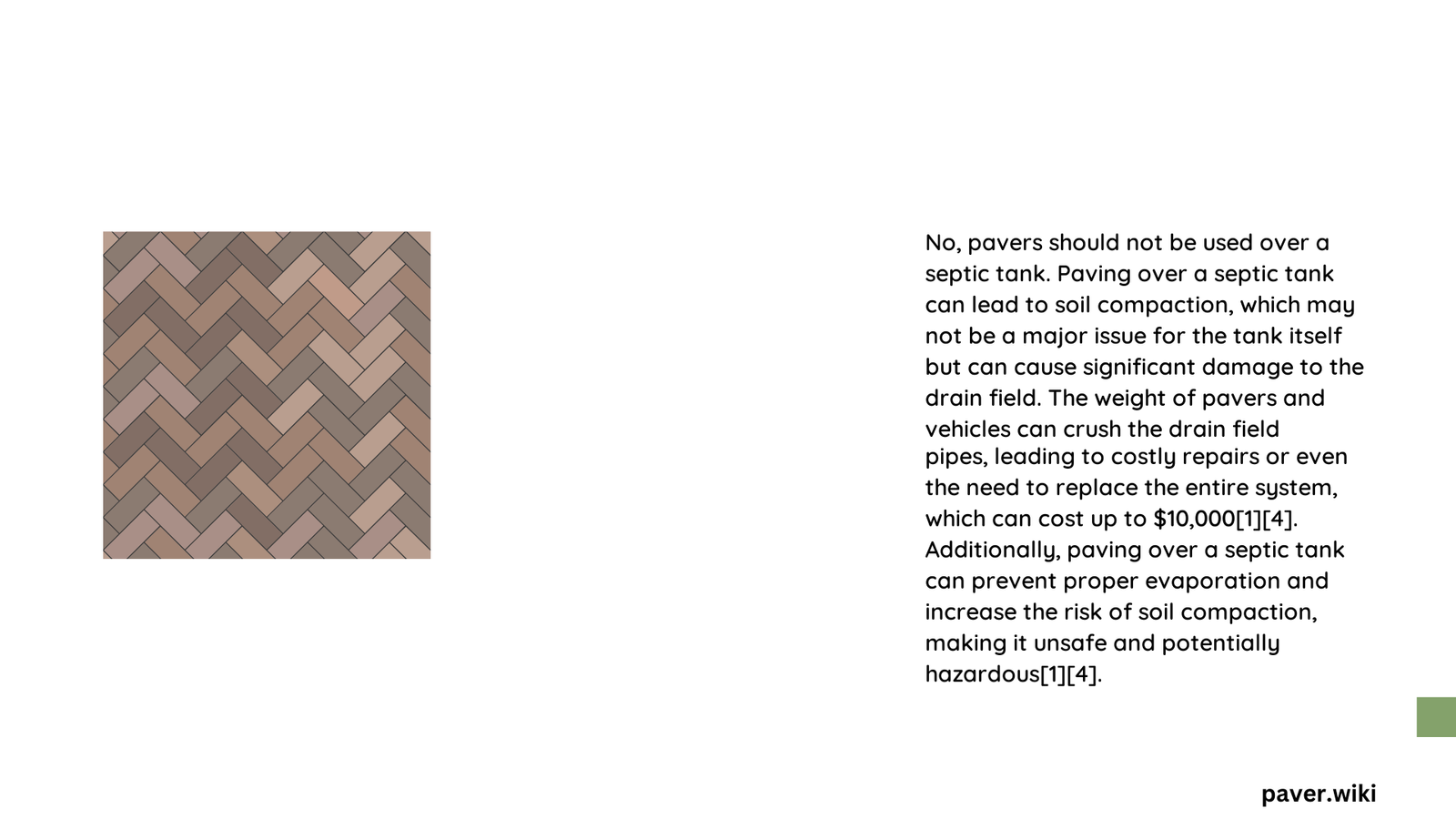Homeowners often wonder about the feasibility of installing pavers over septic tanks, seeking to enhance their outdoor spaces while maintaining system integrity. The short answer is generally no – placing permanent pavers directly over septic tanks can compromise system functionality, restrict access for maintenance, and potentially cause significant damage to underground infrastructure. Understanding the nuanced considerations is crucial for protecting your septic system and avoiding costly repairs.
What Are the Risks of Placing Pavers Over Septic Tanks?
Placing pavers directly over septic tanks presents multiple critical risks:
- Structural Damage Potential
- Pavers can compress soil layers
- Restrict essential soil aeration
- Impede natural drainage processes
-
Block critical access points for maintenance
-
Weight Distribution Concerns
- Solid paver installations create uneven pressure
- Can crack underground pipes
- Potentially collapse tank components
- Disrupt natural effluent flow
How Do Pavers Impact Septic System Functionality?
Septic systems require specific environmental conditions to function effectively:
| System Component | Paver Impact | Recommended Action |
|---|---|---|
| Tank Lid Access | Blocked/Restricted | Maintain removable covering |
| Soil Absorption | Reduced Transpiration | Avoid permanent installations |
| Drainage Capacity | Potential Obstruction | Keep area permeable |
What Are Alternative Landscaping Solutions?

Homeowners seeking aesthetic improvements around septic areas can consider:
- Lightweight stepping stones
- Removable gravel pathways
- Mulch coverings
- Temporary decorative elements
- Landscape designs that avoid direct tank coverage
Can Temporary Paver Installations Work?
Temporary paver solutions require careful planning:
- Use loose, non-mortared materials
- Ensure easy lid removal
- Maintain minimum 10-foot distance from tank edges
- Consult local health department regulations
- Prioritize system accessibility
Professional Recommendations for Septic Tank Areas
Experts unanimously advise:
- Avoid permanent structures over septic systems
- Maintain clear access for inspections
- Use lightweight, removable landscaping elements
- Consult professional septic system designers
- Prioritize system functionality over aesthetic preferences
What Permissions Are Typically Required?
Local regulations vary, but generally:
– Health department approval needed
– Zoning compliance mandatory
– Professional assessment recommended
– Detailed site plan might be required
Technical Considerations for Paver Installations
Technical factors to evaluate:
– Soil composition
– Tank depth
– System age
– Local climate conditions
– Drainage patterns
How to Protect Your Septic System?
Best practices include:
– Regular professional inspections
– Minimal ground disturbance
– Proper vegetation management
– Avoiding heavy equipment near system
– Understanding specific site requirements
Conclusion
While the desire to beautify outdoor spaces is understandable, protecting your septic system should always take precedence. Temporary, removable landscaping solutions offer the best compromise between aesthetic appeal and system functionality.
Reference:
– EPA Septic System Guidelines
– Local Health Department Resources
– Septic System Maintenance Guide
